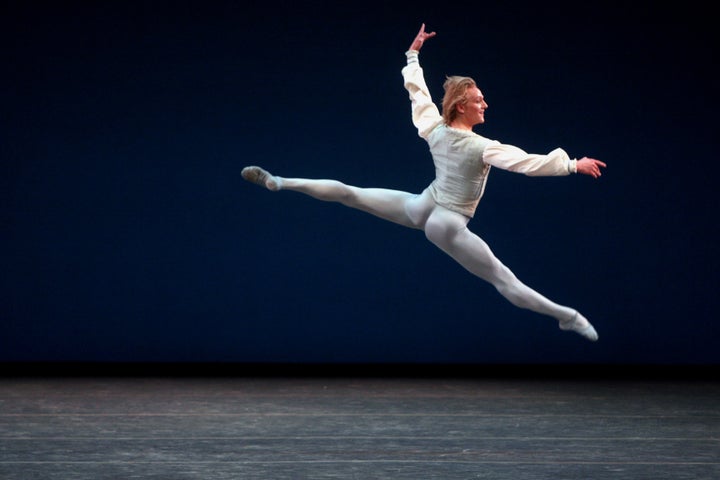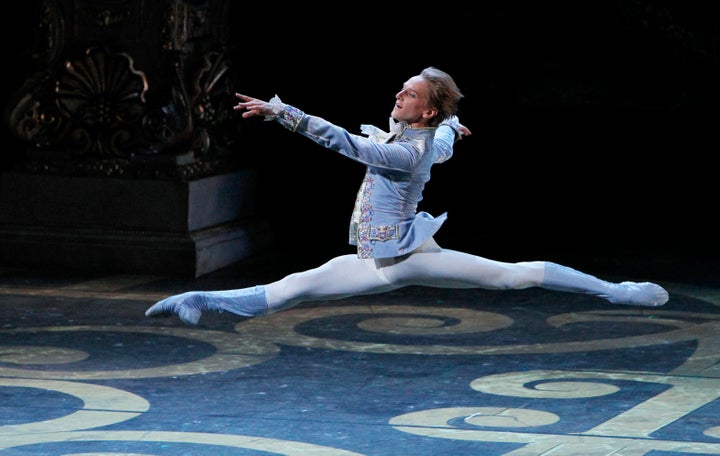
For years, ballet phenom David Hallberg was bullied. Growing up in South Dakota and Tucson, Arizona, the boy who would go on to become one of his generation’s greatest dancers endured teasing, name-calling, ostracism and physical abuse at the hands of classmates — all because he was a boy who danced.
In Hallberg’s forthcoming memoir, A Body of Work: Dancing to The Edge and Back, the American Ballet Theatre principal dancer describes the joy of discovering ballet and the misery of being bullied for it. He was called a “faggot” and a “girl,” and, on one occasion, boys at school emptied “an entire bottle of cheap drugstore perfume” on him. “Every last drop. In seconds. On my shoulders. My face. My hands. My arms. My clothes ... Mission accomplished. I officially smelled like a girl.”
Hallberg found some sanctuary at a performing arts high school, where his love of dance was normal. It offered him and his fellow dancers a “haven where we could be ourselves,” and where the once-tormented dancer and his boyfriend could hold hands without anyone looking askance.
Hallberg’s experience with bullying is the norm for boys who do ballet, whose choice of after-school activity makes them vulnerable to harassment at the hands of classmates and adults — sometimes adults in their own family — who think ballet is an inappropriately feminine pursuit for boys and men.
The statistics on boys, ballet and bullying are staggering. According to a study by dance sociologist Doug Risner of Wayne State University in Detroit, 93 percent of boys involved in ballet reported “teasing and name calling,” and 68 percent experienced “verbal or physical harassment.” Eleven percent said they were victims of physical harm at the hands of people who targeted them because they are boys who study dance.
Much of the teasing and harassment endured by boys in ballet is homophobic, motivated by the perception that ballet is for girls, and that boys who choose to do it must be gay. The epidemic of anti-LGBTQ bullying in schools has earned deserved attention from media outlets and policymakers in recent years, and with good reason: LGBTQ youth are twice as likely to report being bullied and harassed than their straight counterparts, and that harassment increases the risk of self-harm and suicide. As Risner told HuffPost, the numbers from the ballet world alone dwarf those of the general population. “If this were not the arts,” he said in a phone interview, “it would be considered a child health crisis.”
In Risner’s study, teenage boys reported having been teased “forever” and “ALLLLLLLLLL the time,” and more than half said the most significant challenge they confront as boys in ballet is the harassment that serves to police their masculinity — “the homophobic attitude of some” and “the assumption that ballet is only for girls and gay men.” More than 85 percent said more boys would study dance if boys and men weren’t teased and harassed so much for dancing.
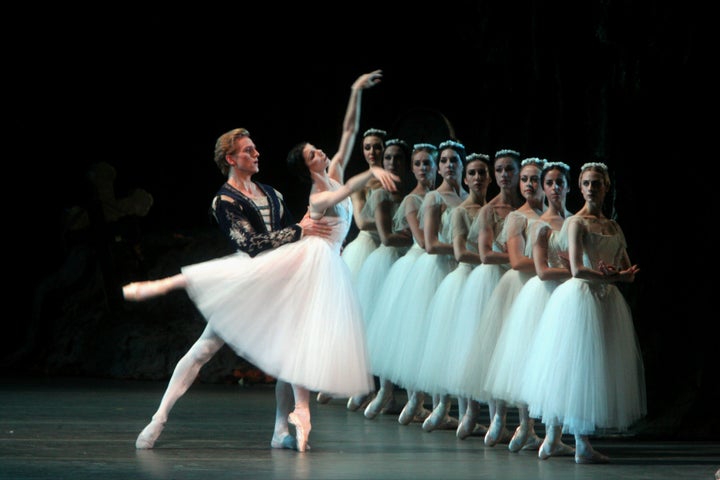
When filmmaker Scott Gormley’s son hit seventh grade, he suddenly became anti-social and withdrawn. “He went from a group of 25 kids that he would hang around with to being home every weekend and only associating with one or two girls. And that kind of struck me funny,” Gormley told HuffPost in a phone interview. Gormley feared the worst — harassment, or, God forbid, sex abuse. Pressed to talk about the change in his behavior, Gormley’s son, who had been studying ballet since he was very young, revealed that “his friends couldn’t accept that he was a dancer,” and had ostracized him from their social group. “I just couldn’t believe that,” Gormley says. “I was flabbergasted that in this day and age people would shun you for wanting to dance ballet.”
Gormley soon discovered that his son was not alone, and decided to explore the idea of making a documentary about the experiences of young boys and men who dance ballet. He found dozens of parents willing to talk about what their sons were going through. “I put out a post on a message board that had many parents on it, and in a matter of hours — not days — I had a full inbox of ‘Oh my God, my son experiences this,’ or ‘You have to talk to so and so.’” Soon Gormley was hearing from adult professional dancers who wanted to tell him about their experiences, and the project ballooned into a full-length documentary film, “Danseur.”
However, not all parents were so willing to talk. Gormley interviewed many boys and young men whose fathers, especially, were unsupportive of their ballet. “There were men whose dads won’t come to performances, or if they were there it was purely window dressing and they weren’t participating. One young man still doesn’t speak to his birth father because of it.” Gormley says. “It shocked me personally because I can’t imagine not supporting my son no matter what he chooses to do. I mean, I have a son who plays hockey and a son who dances ballet. Would I love any one of them any less because they chose to play hockey or dance ballet? It’s a ridiculous notion.”
John Lam, a Boston Ballet principal dancer, says that when he was 14 and was offered a spot at at an elite ballet boarding school in Canada, his father didn’t want him to go. “He said, ‘You have to stay home, I don’t want you to be gay.’ So I said, ‘Okay, I won’t be gay. And I just lied in front of my parents.’” Lam has been a professional dancer for 15 years, and his parents have never seen him perform.
Risner’s findings suggest that Lam’s experience is distressingly common. While boys in their study reported teasing and harassment at the hands of “football jocks” and “sports boys at school who think they are soooooo cool,” many said they get the least support from their fathers. “It’s horrible for these young boys,” Risner says. “They report their fathers, their male siblings, uncles, stepfathers, are the least supportive. And in fact are almost a barrier to their dancing.”
Risner says Gormley’s film captures the contrast between the passion so many boys feel for their art form and the rejection they feel when their fathers don’t support them. “It’s so poignant in the film because you watch these young men, these boys who are so present and engaged and into dance and the physicality and the creative expression,” Risner says, “and then you get them talking about their experiences of bullying and harassment and the lack of support, and you can see that it just wrings them out. They just lose everything. They become ashen.”
Of course, fathers often are supportive of their sons’ passion for ballet. And while many of the boys in Risner’s study report that they get the most support from their mothers, not all mothers are on board with their sons studying ballet. Gormley says he’s been unable to interview at least one boy because his mother refused to sign a release form. Another boy’s mother refused to drive him to his interview, just as she refuses to drive him to ballet class — ever. “It was clear that he was wrestling with not just being a ballet dancer, but potentially being a young gay black man who wants to dance ballet,” Gormley says. “I can’t imagine what he’s struggled with. He’s a gorgeous dancer, too. It was just heartbreaking.”
While many of Risner’s respondents reported that the women in their families are supportive, plenty of girls and women pressure boys to conform to a particular kind of masculinity. One of Gormley’s interviewees says that he’s most viciously teased by girls at school; Hallberg, too, recalls being teased by female classmates.
Sean Aaron Carmon, a dancer at Alvin Ailey American Dance Theater, told HuffPost that when he was growing up and studying ballet in Texas, the only person who gave him a hard time about dancing, apart from his high school gym coach, was his older sister. “She was so embarrassed because in my mind it was totally fine to wear my dance clothes before and after class,” Carmon said in a phone interview. “She said, ‘Can you please not do that, you look ridiculous and it’s really embarrassing.’” Carmon told her that he didn’t really care what people thought of him, “but then I found myself changing because I didn’t want to embarrass her and I didn’t want to make school hard for her.”
Devin Alberda, a member of the corps de ballet at New York City Ballet, started ballet instruction at age 4. One of his earliest memories of ballet class is that a girl classmate cried because she had to stand next to a boy.
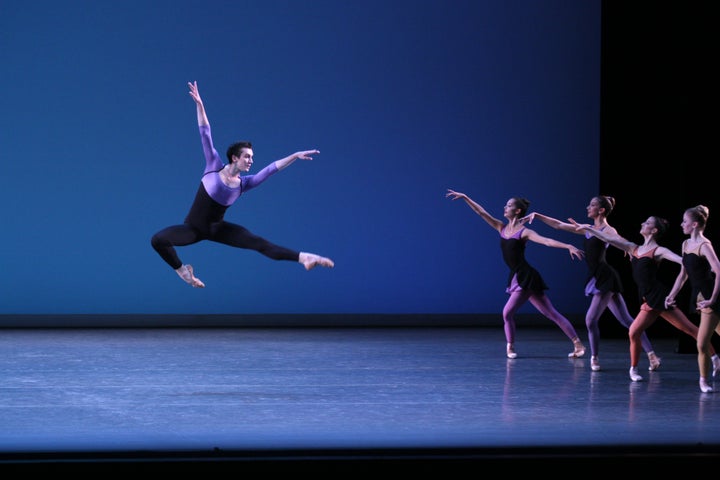
Despite recent shifts in public opinion on LGBTQ issues like marriage equality and adoption rights, the cultural penalties are swift and harsh for boys who transgress gender norms by entering the ballet studio. The popular perception of ballet as feminine means that boys who study it are often viewed with suspicion, and their sexuality is called into question. Risner’s study found that many of the boys who said they were bullied or harassed, be it by school peers or by people in their own families, were subjected to explicit homophobia. “I learned about anal sex from someone telling me I liked it up the ass,” says Alberda, who grew up in Cleveland. “When I was in middle school.”
Other boys and men report being targets of a more generalized misogynistic harassment for their involvement in a pursuit widely seen as being “for girls.” In addition to direct homophobia, Hallberg was mocked for his allegedly girlish voice and gait. For these boys, the line between being called gay, being called girlish and being called a girl is thin, and often blurred, and suggests the extent to which homophobia is often rooted in a disdain for women, girls and all things feminine.
In response to the homophobia and misogyny — the challenges to their masculinity — many argue that ballet is just as masculine, if not more so, than some sports. The boys and men in Gormley’s documentary stress the athletic demands of ballet: how high they jump, how strong they must be to lift their women partners, how much they train and how fit they are. “It takes extreme amounts of training, physical conditioning,” says James Whiteside, a principal dancer at American Ballet Theater. “I go to the gym maybe three or four times a week and lift weights, because there’s so much partnering in ballet, and I want to be strong for my partners.”
Harper Watters, the Houston Ballet demi-soloist, agrees. “I tend to not like to compare to other sports ... because it’s just a different world. We’re not slamming our bodies into people ... but [other athletes are] not having to lift people over their heads and keep them there.” Jared Tan, a dancer at Atlanta Ballet who teaches boys at that company’s school, says it’s “true” that dancers are just as physically impressive as sports figures. “I told them that too,” he says of his bullies. “I told them, I’m a better athlete than you. I dance every day.” Though they wear tights and move to classical music, they’re really athletes, and therefore, really men.
Others respond by reminding their tormentors that, as ballet dancers, they get to spend lots of time with girls. “My mom would give me lines like, ‘I get to be around girls all day,’” Alberda recalls. Paul Amrani, a 17-year-old ballet student in Iowa City who trained full time for two years at the Houston Ballet Academy, echoed this sentiment. “We get to be around athletic women all day.”
It’s true that boys are dramatically outnumbered by girls in ballet classes. Leslie Nolte, who owns the Iowa City school where Amrani trains, says that of her 1,000 students, 34 are boys. Many of the ballet dancers who spoke to HuffPost about their experiences reported being the only boy in their class, or even in their entire dance school, and said that they didn’t dance with other boys until they left home for the residential programs that gather students from all over the country and feed directly into ballet companies. While these kinds of numbers can make for a good retort to a playground bully, they also result in isolation and loneliness for boys, who go without the kind of peer group affirmation that girls who study ballet so often enjoy.
In Risner’s study, 71 percent of boys said they thought more boys would study dance “if boys/males knew more male friends who dance.”
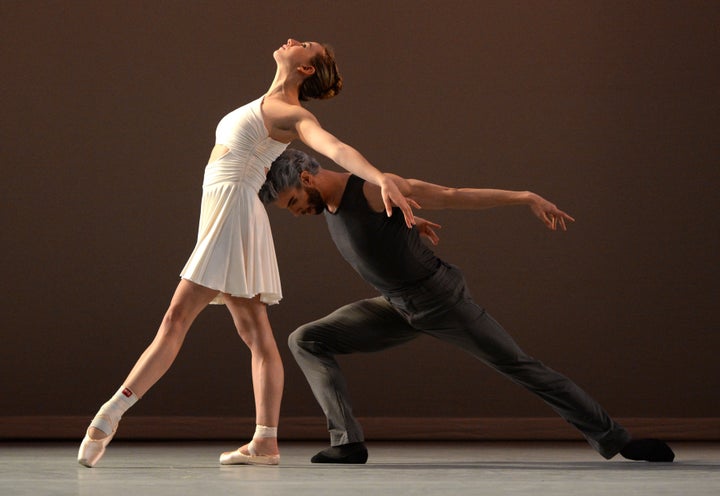
Not all men in ballet are on board with the effort to prove how athletic (that is, masculine) and outnumbered (that is, straight) they are. “We’re always trying to prove that dance is a sport, this extremely highly athletic art form,” says Watters. “How many turns can I do, how high can I jump, how many beats can I do?”
But that emphasis on athleticism and strength, the parts of ballet that might be viewed as masculine, can devalue grace and elegance, the parts of ballet that might be viewed as feminine. “We’re always reifying these labels that we’re hoping to challenge, by responding to them in ways that reinforce the stereotype we’re trying to challenge,” Alberda says. Keith Reeves, an apprentice dancer at Atlanta Ballet, bristles at attempts to prove ballet’s worth against other, more traditionally masculine, pursuits. “Why can’t ballet just be ballet?” he says to HuffPost in a phone interview. “Why do we have to super-masculinize it? Why do we have to compare it to football? There’s no need to compare us; we’re a fine art, not a sport.”
Gormley agrees. “There’s nothing wrong with it just being beautiful.”
Still, the emphasis on how athletic ballet is, how similar it is to the sports played by many American boys, persists. Given the widespread perception that ballet is for girls, and boys’ legitimate fear that they’ll be looked down on for dancing, teachers and administrators are concerned about recruiting and retaining boys. “The field has spent so much time obsessing over how to attract more boys to dance,” Risner says. “And in doing that they come up with all these ways to trick them into trying it.” Dance scholar Michael Gard calls this “legitimation through athleticism.” But comparing dancing with sports, Risner says, doesn’t work, because the most common reason that boys get involved in ballet is the same as it is for girls: they like to perform.
Risner argues that recruitment models that emphasize athletic power over artistic performance (which is arguably a more acceptable passion for girls than for boys) miss the point. “We’ve really been asking the wrong questions here. Boys and girls are more similar in what brings them to dance than they are different,” Risner says. “Only 2 percent of boys in my studies reported any sort of participation in sports, and if they did it was swimming and diving, it was not a team sport. And only 8 percent of adolescent male dancers believed that if their teachers made dance more like sports, it would increase male participation. Those are just wrongheaded assumptions that deny boys what it is they like about dancing.”
But those assumptions reveal what many older dancers report: an internalized homophobia and commitment to rigid gender norms, even within an art form where approximately half of men identify as gay or bisexual.
The emphasis on how feminine male dancers aren’t presents a challenge for gay dancers, especially adolescent boys wrestling with their burgeoning sexualities. “There was a tendency to overcompensate that made it more difficult to accept that maybe all these labels being hurled at me in part pejorative ways were accurate,” says Alberda. “It’s hard to be a gay man while repudiating the accusations being leveled against you.”
The stereotype that all male dancers are gay also prevents some men from identifying as dancers. Peter Weil, who dances with Pennsylvania Ballet and is featured in “Danseur,” says he resisted calling himself a dancer for a long time, because he “didn’t want to be just another gay boy doing ballet.”
Risner worries that the emphasis on how traditionally masculine ballet dancers are reinforces the notion that art and masculinity are mutually exclusive. Katherine Polasek and Emily Roper, dance scholars at SUNY Cortland and Sam Houston State University, respectively, argue that “strategies historically employed to ‘legitimize’ dance — emphasizing comparisons between sport and dance, highlighting the work of heterosexual males and minimizing that of non-heterosexual males — must be stopped as they reproduce negative stereotypes of non-heterosexual dancers.”
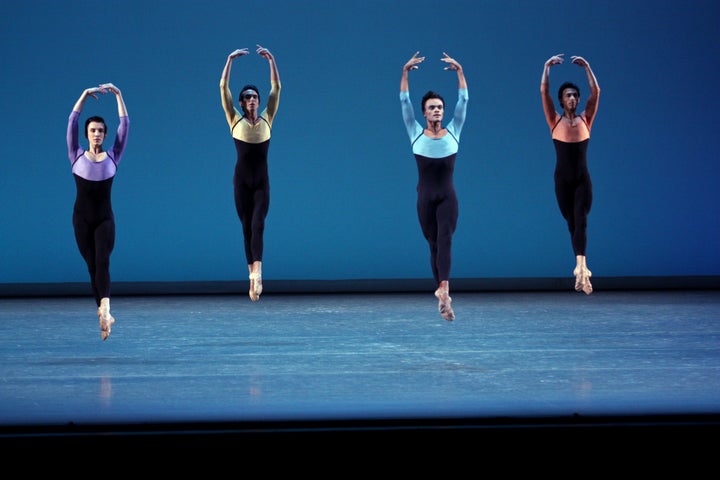
Of course, not all boys involved in ballet are bullied. Dancers who attended performing arts schools, in particular, were insulated from the kind of daily torment to which Hallberg was subjected in his “normal schools.” But in the age of social media, enrolling in a performing arts school may not provide the robust safe haven it once did.
Brack Thomas-Fischer, a 17-year-old ballet student who posts on Instagram under the handle @beautiful_ballerinas, says he’s come in for his fair share of abuse on the platform. Thomas-Fischer’s nearly 80,000 followers include ballet stars from around the world, but it’s not uncommon for him to find disparaging and homophobic comments under the videos he posts of professional ballerinas performing. Thomas-Fischer wants to dance women’s roles when he grows up, and is preparing to start dancing on pointe, which is almost exclusively reserved for women. His dance school and his parents “are perfectly okay with it,” but often the reception on social media is hostile. “That’s a really weird dream,” was one of the milder messages.
Similarly, Watters, who grew up in a supportive family and whose parents were involved in the arts, says he wasn’t bullied much as a child, but the “hate comments” he receives on his Instagram account now “are astounding.”
Thomas-Fischer and Watters might face additional negative attention because of their race and sexuality. Both are gay; Thomas-Fischer is multiracial, and Watters is black. Their involvement in ballet contradicts stereotypes of black masculinity, and their race makes them a minority in the largely white world of American ballet. As Gormley suggests, they likely have a harder time inside the studio and outside of it.
“There were no dancers like me that I could see, and there were no black male dance teachers in my city,” the late dancer and choreographer Darrell Cleveland says in “Danseur.” Cleveland’s family was supportive of his taking hip-hop classes, viewing them as suitably masculine, but didn’t approve of his taking ballet.
Reeves, the Atlanta ballet apprentice, was bullied at school for being gay and bullied at ballet class for having started classes at the late age of 15. He says his family wanted him to play basketball or football. “Being an African American male, every boy wanted to be a football star, and their parents wanted them to be a doctor,” he explains. “All of the odds are against me as a black male, and then also being gay and also being a ballet dancer ... even now those are hard things to navigate.”
Ashton, a black teenager featured in “Danseur,” says his grandmother, who is from Uganda, fears that ballet will turn him gay, and tries to convince his mother to pull him out of it.

There’s little doubt among dancers that the abuse and isolation boys endure leads promising artists to drop out. Marcello Angelini, the artistic director of Tulsa Ballet, enrolled his twin boys in ballet classes when they were very young. Both were bullied; one had a knife pulled on him by a school classmate. Today, one is a professional dancer, while the other quit ballet and picked up crew instead. “Does it cause people to drop out? Absolutely.” says Polasek.
“There were a lot of situations where the boys did stop dancing because of the pressure,” says Weil. “One boy in particular was on the football team and the lacrosse team, but he got no support, and he stopped, and I really believe it was because of his peers.”
Risner says gathering data on how many boys quit ballet — and why they quit — is difficult, but anecdotal evidence suggests that bullying and lack of support play large roles. One solution may be to create boys-only ballet spaces, which can break down the sense of isolation that so many boys feel at dance schools. A boys-only school opened in London in 2014 and now claims 170 students, although its marketing leans heavily on the assumption that it’s undesirable for boys to participate in feminine activities. “Ballet really isn’t girly,” the school’s director told one newspaper. “Tutus, pink, girly, that is everything we are not,” he told another. In Sydney, almost 100 boys from around Australia gather for weeklong boys-only summer intensives where, director Robert Fox says, they have a chance “to meet each other, make friends with each other, interact with each other, and have a positive experience from engaging in dance.” Similar programs exist in the United States, including one founded by a mother whose son was always the only boy in his ballet classes. An English initiative aims to increase the number of boys studying ballet by “with new dance partnerships inspired by sports and superheroes.”
Risner recommends that dance teachers and parents work together to ensure that boys get the support they need in the studio and outside of it. Teachers, he says, should avoid teaching methods “that reinforce narrow definitions of femininity and masculinity,” a challenge in an art form that has strictly circumscribed movements, roles and, of course, footwear, for men and women. Risner also says teachers must be prepared to address homophobia and sexual orientation with students who are expressing prejudice and questioning their sexualities. Parents, he says, must understand and anticipate the stigma their sons may experience for studying dance, and consider the “very real possibility” that their son could be gay or bisexual, and prepare their child for “discrimination and prejudice regardless of his sexual orientation.”
Ultimately, dancers say, boys who want to pursue ballet will need to develop resilience and keep their eyes on the prize. “That feeling that someone doesn’t approve of you, at first it hurts,” says one teen boy in “Danseur,” recalling bullying so severe that it made him want to leave school. “But over time you have to realize ... not everyone’s going to like you, and you have to do what you love.” Patrick Frenette, who dances in the corps de ballet at American Ballet Theater, says he had to remind himself that high school was not forever. “I would tell myself, ‘It’s going to pay off and you’re going to leave these people behind.’” Tan, the Atlanta Ballet teacher, tells his male students to ignore the bullies. “And I tell them to keep being themselves. I tell them that it happened to me too, and look where I am today.”
Hallberg writes that he never considered quitting ballet, no matter how bad the harassment became, and that when boys tell him they’re thinking of walking away, he tells them how lucky they are to have an outlet like ballet. “The kids taunting you should only be so lucky to have a passion equal to yours.” The bullies can say what they like, he tells boys, “but you will always have something stronger than they do: the courage to do something different.”
CORRECTION: An earlier version mistakenly identified Maggie Allesee as co-author of Risner’s study. She is a philanthropist who endowed the Wayne State University Department of Theatre and Dance. Also, Jared Tan is a current Atlanta Ballet dancer.
